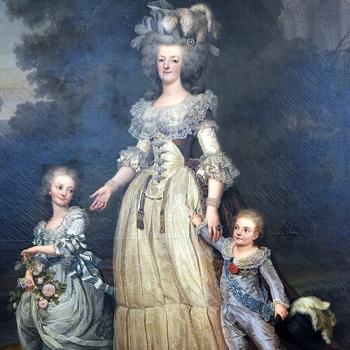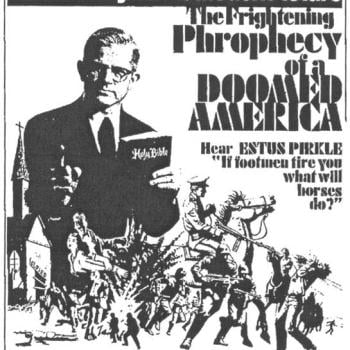
Source: Wikimedia user Gorup de Besanez
License
She’s a woman chopping up a bird, knife slicing flesh from flesh. The camera lingers, pans up, revealing another bird, chirping in a cage. Alive. Does it look on in horror? I’m no bird psychologist. But we do. The woman’s face, swathed in shadow, announces itself with only a shock of curly black hair. Not even her eyes are visible. A Black man walks in wearing fine red serving clothes and tells her to stop singing “The Battle Hyman of the Republic.” A hard cut to the woman now turned around. Staring at the man, she is a woman in full, Al-Jolson-approved blackface.
So opens Rainer Werner Fassbinder’s Whity (1971). Shot by Michael Ballhaus, later Scorsese’s cinematographer, the film turns the Spanish countryside into the American southwest in 1878. Slavery might be abolished, but you’d never know it looking at the Nicholson household. Whity (Günther Kaufmann), the servant we met in the first scene, waits on them hand and foot, ever ready for the ring of a little bell. Marpessa (Elaine Baker), the woman from the opening, is his mother, also a servant, though more recalcitrant than her son. Their employers—perhaps “lords” might be better—consist of a father, a mother, and two sons, one of whom is mentally handicapped. Each of the Nicholsons wears pallid face paint straight out of George Romero.
As with most Fassbinder fare, it’s hard to say “what happens.” Whity is loyal, but the family’s cruelty and backstabbing push him further and further. Each seems to want him to kill the others so that they can split the estate. As usual, the stable domestic family’s surface hides dissatisfaction and seeds of something darker that can never quite be named. To own people—even if not in name—Fassbinder seems to say, can only make one a lunatic. Put another way, only lunatics could possibly own slaves.
The slave, of course, can only take so much.
But the remarkable thing in Fassbinder’s world is how much. Whity is not a movie about inevitable rage. It concerns itself, rather, with how a system of exploitation produces docile help. There exists, however, a small problem. Cruel people take things too far. Even the happy servant has needs and wants of his own.
This slow-building tension lives in the film’s every moment. Everyone moves like models conditioned in vats of molasses. This slow, deliberate approach leaves the viewer with time to take in Fassbinder’s gorgeous compositions, which, again, as usual, trap the characters in their surroundings. There are no wide, open vistas here. No West to be won or bad guys to defeat. The only cowboy of note is Fassbinder himself, a barfly who likes to play cards and beat up Whity for cavorting with a white prostitute played by Fassbinder-regular Hannah Schygulla.
In this sense, it is without a doubt a “revisionist Western” though one responding, it seems to me, as much to Karl May as to John Ford. May, a favorite of Hitler’s and among Germany’s most successful authors of the late-nineteenth century, imbued that nation’s imagination with an American West even more fantastical than our own. His version, populated by noble savages, mirrors the orientalism of his novels set in the Ottoman East. His American southwest, rich in Apache warriors, sees the end of an era of fantastical obedience to nature and its laws. In other words, May was a fabulist, an enchanter, and one of the highest order.
Fassbinder gets his revenge here, on May and on the United States. His southwest is a land of cruelty, where servants get ironic names and wealthy ranchers don’t hire guns—they torture one another, turning their violence in upon themselves. It has, of course, to go somewhere. And that’s the point in Whity, as so often with Fassbinder—violence, human indignity, relationships of domination—these will define us so long as we live, happy we may think, with and in subjugation.











